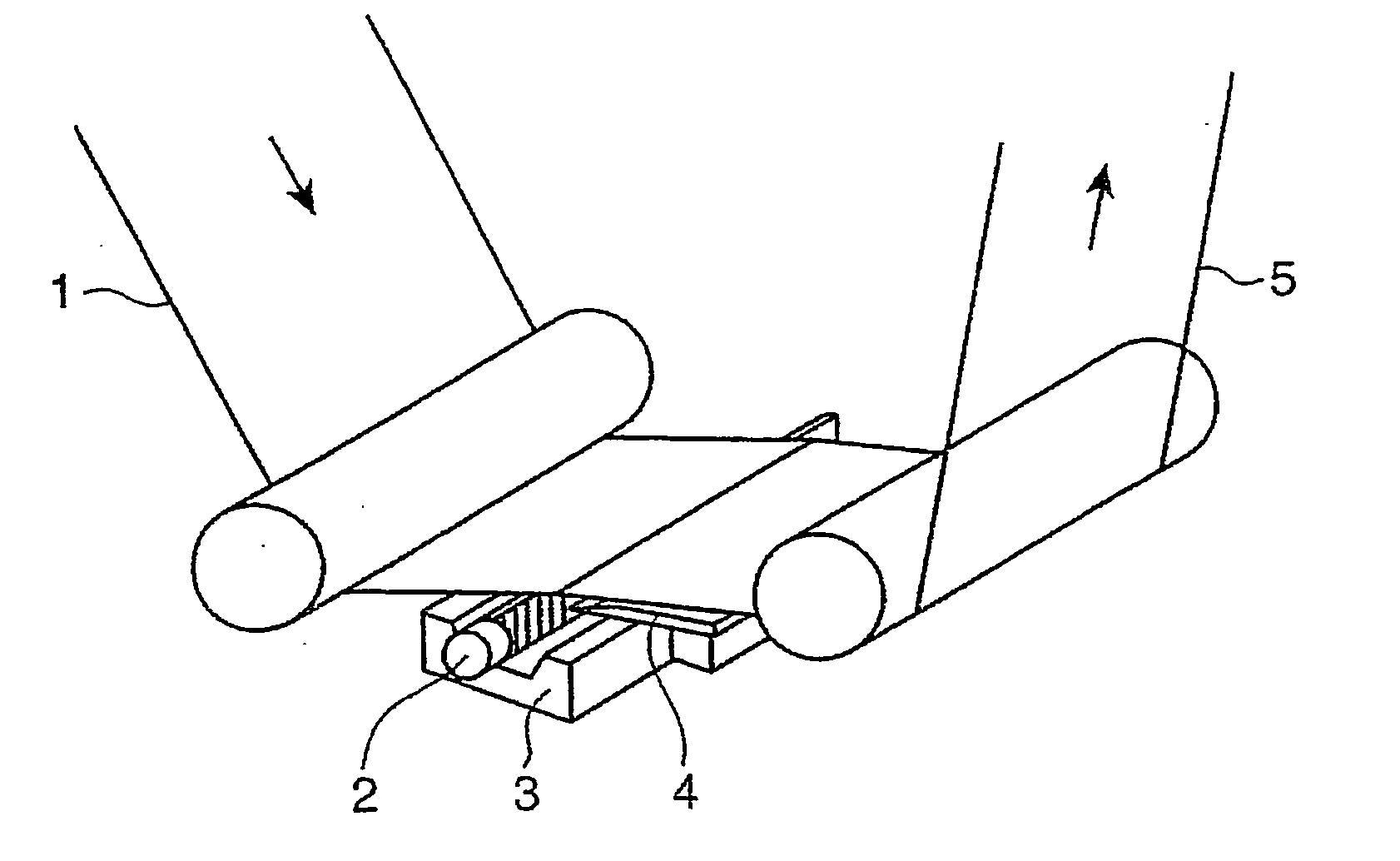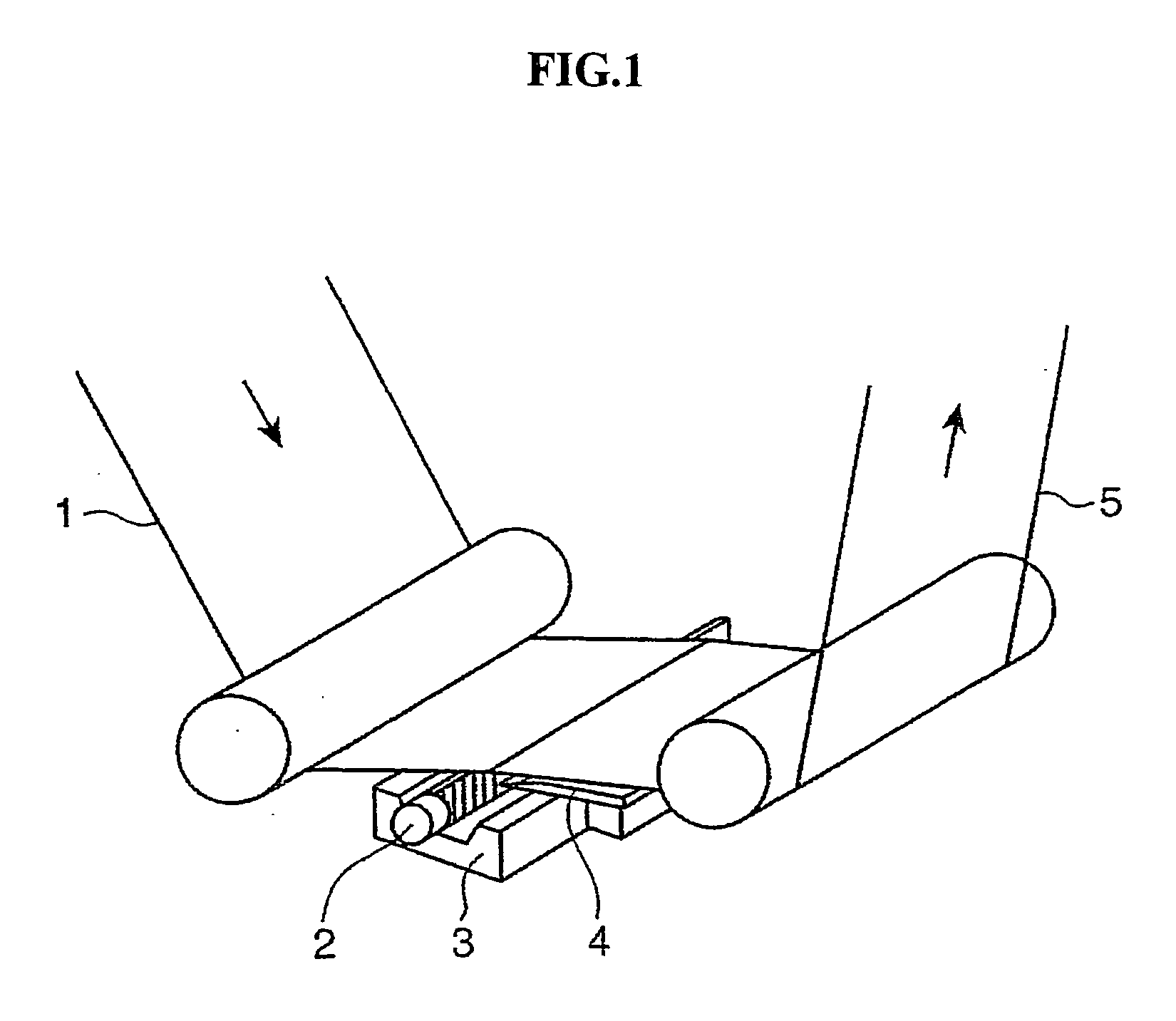Near-infrared absorbing film, and process for production the same, near-infrared absorbing film roll, process for producing the same and near-infrared absorbing filter
a technology film, applied in the field of near-infrared ray absorption film, can solve the problems of insufficient satisfactory, remarkable defects, and lack of uniformity of application
- Summary
- Abstract
- Description
- Claims
- Application Information
AI Technical Summary
Benefits of technology
Problems solved by technology
Method used
Image
Examples
experiment 1
Experiment 1-1
1. Manufacturing of Substrate Film
[0318] A polyethylene terephthalate resin having an intrinsic viscosity of 0.62 dl / g was fed to a biaxial screw extruder, melt extruded through a T-die at 290° C., and adhesion-solidified while static electricity application was imparted on a cooling rotation metal roll to obtain an unstretched sheet.
[0319] Then, the unstretched sheet was heated to 90° C. with a roll stretching machine, and longitudinally stretched at 3.5-fold, and obtained a longitudinally stretched film, a coating solution A for an intermediate layer having a composition shown in the following Table 1 was coated on both sides of the longitudinally stretched film so that a coating amount after drying became 0.5 g / m2, and this was passed for 20 seconds under the hot air at 120° C. at an air flow of 10 m / second, to form an intermediate layer. Further, this film was heated to 140° C. with a tenter, and transversely stretched at 3.7-fold, and heat-treated at 235° C. ...
experiment 1-2
[0322] According to the same manner as that of Experiment 1-1 except that the surfactant in a coating solution for forming a near-infrared ray absorption layer was changed to a silicone surfactant (FZ-2105, available from Nippon Unicar Company Limited) having HLB of 11, a near-infrared ray absorption film was obtained. Because of high hydrophilicity of the surfactant, stability with time under a high temperature and a high humidity of the film was slightly inferior. In addition, since the effect of imparting slidability due to localization on the surface was deficient, winding slippage occurred slightly. In all cases, the film was at a practical level.
experiment 1-3
[0323] According to the same manner as that of Experiment 1-1 except that the surfactant in a coating solution for forming a near-infrared ray absorption layer was changed to a silicone surfactant (FZ-2136, available from Nippon Unicar Company Limited) having HLB of 3, a near-infrared ray absorption film was obtained. Because of the high hydrophobicity of the surfactant, leveling property of the film was slightly inferior, and a small amount of a fine defect was generated.
PUM
 Login to View More
Login to View More Abstract
Description
Claims
Application Information
 Login to View More
Login to View More - R&D
- Intellectual Property
- Life Sciences
- Materials
- Tech Scout
- Unparalleled Data Quality
- Higher Quality Content
- 60% Fewer Hallucinations
Browse by: Latest US Patents, China's latest patents, Technical Efficacy Thesaurus, Application Domain, Technology Topic, Popular Technical Reports.
© 2025 PatSnap. All rights reserved.Legal|Privacy policy|Modern Slavery Act Transparency Statement|Sitemap|About US| Contact US: help@patsnap.com



